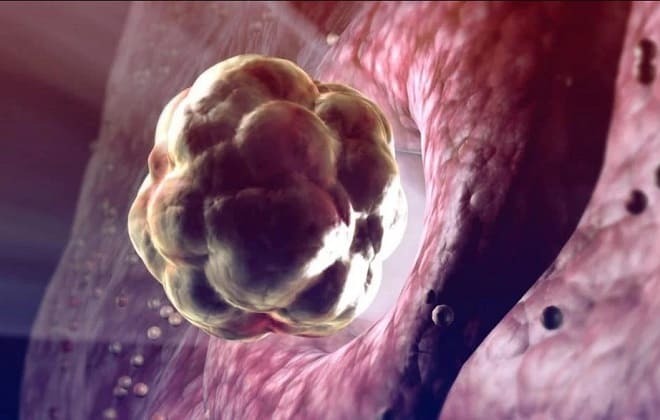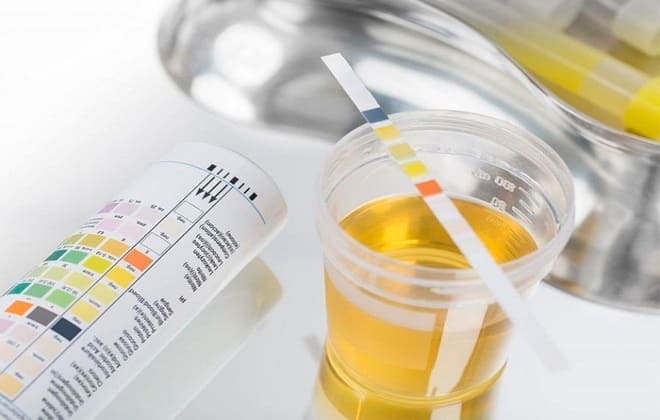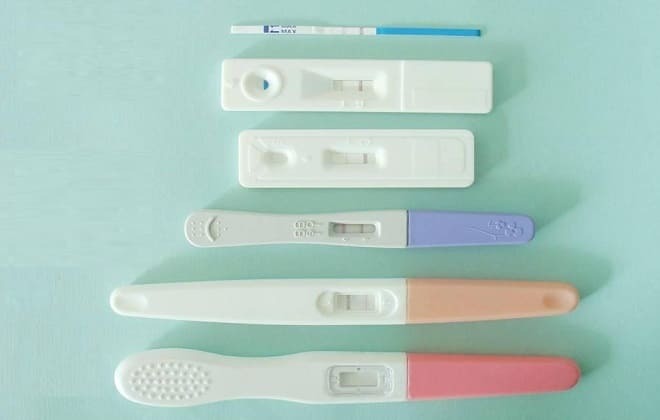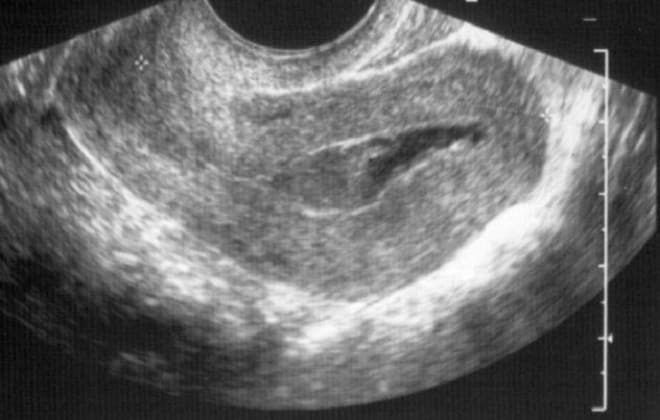Content
- The relationship of hCG and ovulation
- When hCG starts to be produced
- How to determine the level of the hormone
- Analysis of urine in the laboratory
- Home test
- Types of pregnancy tests
- Daily rate from conception
- False readings
The level of hCG by day from conception in the urine allows you to assess the embryonic development of the fetus. Deviations in the concentration of the hormone from the norm raise suspicion of the presence of a pathological process. With a decrease in the content of the hormonal compound, there is a risk of fetal death. The growth of hCG by day indicates the normal development of the unborn child.

The relationship of hCG and ovulation
In the process of ovulation and the introduction of the embryo into the lining of the uterus, the activity of the ovaries increases. Therefore, the gonads begin to actively produce gonadotropin. After the release of the egg into the uterine cavity, it is necessary in order to prepare the organ mucosa for possible embryo implantation. The endometrium becomes loose within 5-7 days.

Later, after the embryo is introduced into the endometrial layer of hCG, the concentration of which increases in the urine, it participates in the following processes:
- Supports the life of the corpus luteum. It is necessary for the production of progesterone, which regulates the laying of the main organs and systems in the body of the developing fetus. The corpus luteum lives up to 13 weeks of embryonic development, after which the placenta begins to perform its functions.
- Slows down the maturation of follicles. No new eggs should appear during pregnancy. This is necessary in order not to waste the limited follicular reserve.
- Activates the development of seminiferous tubules in male embryos.
- Prevents rejection of the ovum by the mother's body, especially when the Rh factors of the woman and the embryo are incompatible.
Determining the amount of hCG by days after ovulation allows you to identify an incipient pregnancy.
-
Only as directed by the attending physician 30%, 1026 of votes
1026 of votes30%
1026 votes - 30% of all votes
-
Once a year and I think that's enough 18%, 592 vote
592 vote18%
592 votes - 18% of all votes
-
Only when I'm sick 16%, 524 vote
524 vote16%
524 votes - 16% of all votes
-
At least twice a year 15%, 494 vote
494 vote15%
494 votes - 15% of all votes
-
More than twice a year but less than six times 11%, 372 vote
372 vote11%
372 votes - 11% of all votes
-
I monitor my health and rent once a month 6%, 213 of votes
213 of votes6%
213 votes - 6% of all votes
-
I am afraid of this procedure and try not to surrender 4%, 146 of votes
146 of votes4%
146 votes - 4% of all votes
Total Votes: 3367
21.10.2019
×
You or from your IP have already voted.Important information: Table of the norms of hormones FSH and LH during menopause in women
When hCG starts to be produced
HCG appears in urine 8-9 days after conception. The hormone begins to be actively produced by the embryonic part of the placenta on the 8th day after ovulation and after 24 hours from the moment the ovum is introduced into the endometrial layer.
The hormone level is increased prior to conception to prepare the uterine mucosa for implantation of the embryo.
HCG will show pregnancy during rapid tests or laboratory tests.
How to determine the level of the hormone
To find out the exact amount of hCG in urine, it is necessary to submit biological material for analysis to a laboratory. In case of an unconfirmed pregnancy, the gynecologist issues a referral for examination if there is a suspicion of cancer of the ovaries and their appendages, fetal death, and the absence of a baby's heartbeat on ultrasound.

To refute or confirm conception after intercourse, special tests allow. Morning urine is applied to them in a small amount.
Analysis of urine in the laboratory
Analysis of urine for hCG requires special preparation before sampling biological fluid. You must adhere to the following rules:
- give up sexual intercourse in 24 hours;
- reduce physical and mental stress in 2 days;
- avoid stress;
- do not drink alcoholic beverages, smoke in 1 day;
- in 48 hours it is necessary, if possible, to stop taking hormonal drugs, antibiotics, anti-inflammatory drugs, the metabolites of which leave the body in the urine.
Any violation of the rules can distort the result obtained, which is why the woman will have to take urine for analysis again. At the same time, blood is donated for research to determine the ratio of hormone levels in plasma and urine. This will help to more accurately assess the condition of the fetus.
Important information: On what day of the cycle is it correct to donate blood for anti-Müllerian hormone and when is it better to prepare for women
Home test
It is not necessary to undergo laboratory tests to detect pregnancy. Rapid tests, which are carried out at home, help to refute or confirm conception. There are different types of rapid studies, which differ in the degree of sensitivity to gonadotropin and methods of use.

Rarely does a home test show conception, and a laboratory test disproves it. In this case, it is possible to purchase a low-quality rod, the development of inflammation in the organs of the genitourinary system. To exclude the risk of diseases, it is necessary to pass a second analysis to the laboratory.
Types of pregnancy tests
Quick test to identify hCG level in urine, it is necessary to carry out after 5 days from the day when there was a delay in menstruation. During this period, an intensive production of the hormone is observed, its content begins to increase, so the test shows reliable results with a high probability.

There are 5 types of rapid tests to help determine the onset of pregnancy:
- Test strip. The easiest to use and cheapest option on the pharmaceutical market. The strips are packaged in plastic bags. Each has a special area with a control line impregnated with a chemical that stains the paper with an increase in gonadotropin in the urine. The result appears within 5 minutes. Upon awakening, the test is dipped in urine to the control line.
- Tablet. They are distinguished by a high susceptibility to the content of hCG in urine during pregnancy. They allow you to detect pregnancy in the early stages after 10-15 days from ovulation. The test is a plastic tablet with a hole on it. It contains paper with a chemical compound susceptible to gonadotropin. The urine is applied to the paper using a pipette.
- Inkjet. The test is placed under a stream of morning urine. The paper is impregnated with a large amount of a hormone-sensitive chemical compound.
- Electronic. The high-precision technique not only detects the content of the hormone in urine, but also shows its approximate concentration. The rod is equipped with a display that shows the due date after analysis. An electronic test can show how hCG in urine changes by day from conception.
- Rod with reservoir. Differs in the presence of a container for the collection of urine. Convenient for operation.
All tests have a control strip. It is colored regardless of the result. The second test zone appears only with a sufficient amount of hCG.
Daily rate from conception
An increase in the plasma concentration of the hormone is observed 7-8 days after fertilization. During this period, it is implanted into the endometrium, so the active production of hCG begins. Before the embryo is introduced into the uterine mucosa, an insignificant content of gonadotropin is observed in the urine.
Important information: Table of estradiol norms in women by age and what the hormone is responsible for
Differences in hormone levels can be observed with a sensitive test strip. It is carried out 7-10 days after intercourse during ovulation. If there is no menstrual bleeding, but the test shows a negative result, it should be repeated after 48-72 hours. Every 24 hours, the amount of the hormonal compound in the blood and urine doubles.
Changes in the level of hCG in urine by day (DPO) can be traced in the following table:
| Day | The minimum amount, mU / ml | Average, mU / ml | Maximum possible, mU / ml |
| 8 | 3 | 5 | 10 |
| 9 | 6 | 25 | 27 |
| 12 | 13 | 36 | 50 |
| 14 | 26 | 100 | 180 |
| 16 | 40 | 200 | 450 |
| 17 | 100 | 420 | 550 |
| 18 | 220 | 670 | 850 |
| 19 | 350 | 1000 | 1200 |
| 20 | 520 | 1400 | 1900 |
| 21 | 730 | 1950 | 3200 |
| 22 | 1000 | 2670 | 5000 |
| 23 | 1400 | 3500 | 6000 |
| 24 | 1850 | 4600 | 7500 |
| 25 | 2400 | 6200 | 10000 |
| 26 | 4000 | 8200 | 15500 |
| 27 | 5400 | 10500 | 19500 |
| 28 | 7000 | 11300 | 27000 |
| 29 | 8890 | 13500 | 30000 |
| 30 | 10000 | 16400 | 40000 |
| 31-33 | 12000 | 21000 | 58000 |
| 33-34 | 14750 | 25000 | 71000 |
| 35-36 | 18000 | 33500 | 76000 |
| 37-38 | 21300 | 42250 | 85000 |
| 39-40 | 24000 | 55000 | 105000 |
| 41-42 | 27000 | 65000 | 125000 |
In case of unsuccessful conception, the gonadotropin indicator remains within 5 mU / ml. When the concentration of hCG in the urine rises on days after ovulation, this indicates the onset of conception.
False readings
In some cases, after receiving results from the laboratory, the amount of hCG shows strong deviations from normal values. This is due to the following factors:
- possible medical error during the study;
- prolificacy;
- the presence of cancerous tumors in the uterus and ovaries;
- taking hormonal medications.
If there is a suspicion of a laboratory technician's mistake, a woman has the right to demand a re-analysis. With multiple pregnancies, it is normal for a sharp increase in hCG levels in the blood and urine by 2-3 times, since more gonadotropin is produced when the egg is divided. Because of this, a woman may mistakenly think that hCG in the urine is showing a false result.
Malignant tumors cause hormonal imbalances in the body, which leads to fluctuations in gonadotropin in the blood.



